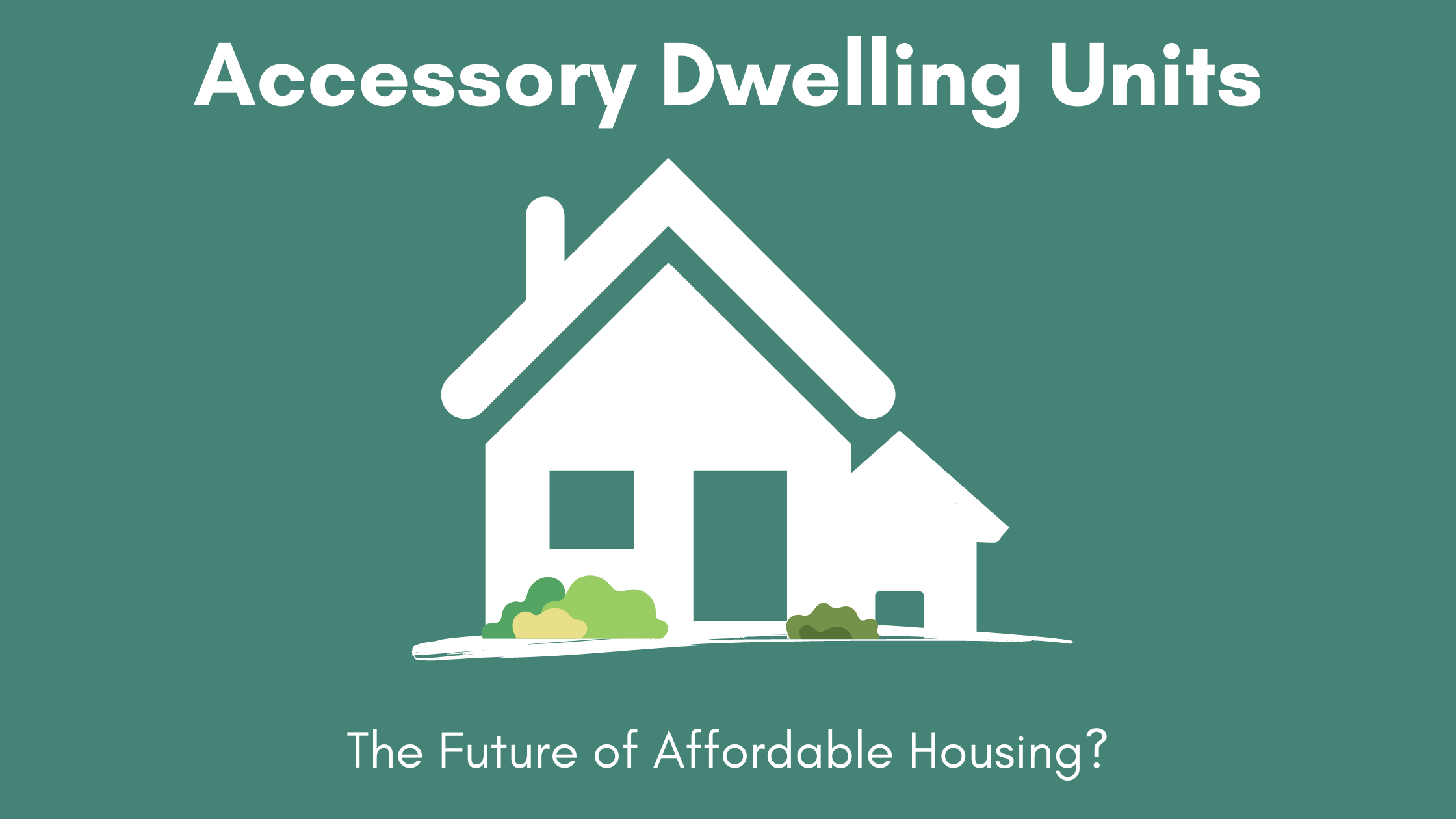
WHAT IS AN ACCESSORY DWELLING UNIT?
An Accessory dwelling unit or ADU is a secondary housing unit on a single-family residential lot. There are different types of accessory dwelling units, with most falling under the following categories:
1) Detached ADU
2) Garage/Shed Conversion ADU
3) ADU Above Secondary Structure
4) Attached ADU
5) Basement Conversion ADU
6) Internal ADU
Although there can be many different types of ADUs, they have some similarities. These include aspects like. . .
- Being an accessory to another housing unit
- Being significantly smaller than a standard U.S. home
- Differing zoning regulations to a standard home
DRAWBACKS & BENEFITS OF AN ADU?
Like most things, ADUs have their supporters and opposition.
The supporters use the following in their defense of the units. . .
- A solution to combat the shortage of available, affordable, and sustainable housing
- An alternative to traditional housing
- Option for elderly/extended family to stay with family
- More energy efficient
Meanwhile, the opposition’s points against them include:
- They infringe on many “traditional notions of the public peace and good order” by contributing to. . .
- overcrowding
- noise issues
- low parking
- infringement of privacy
- modifying single-family districts
- A supposed detrimental effect on property values
- Negative impact on neighboring properties
- If used as a short-term rental, it changes the nature of the neighborhood and can open up the possibility of more crime and “suspicious” individuals
Some of these opposition points aren’t necessarily 100% accurate, but it is what is said in opposition of expanding ADUs in communities.
ARE THEY LEGAL?
There are illegal, or rather unpermitted ADUs; these occur when additional living space is added without permits to allow extra habitable space. ADU owners that have the necessary permits, have legal ones though as they are fully permitted and follow all relevant zoning rules.
WHO REGULATES ADUS?
ADUs are not regulated by state law, which means municipalities are welcome to establish the defining characteristics and rules for such places.
Some municipalities have decided to regulate aspects like limiting the number of ADUs per lot, minimum lot size, setback limitations, square footage, aesthetic requirements, parking, etc.
We recommend contacting your municipality directly if you are interested in potentially building or remodeling a space into an ADU to determine the restrictions or regulations.
DO ADUS ADD VALUE TO YOUR PROPERTY?
An ADU can be value-adding to your property, providing rental revenue or an increase in the appraisal value of a home. Different categories of ADUs can bring different levels of value.
- A finished, detached ADU brings the most value as it is distinct from the home and a separate rental.
- The attached ADU is the second most value-adding type, due to less privacy and limiting space ordinances in new construction.
- An interior conversion ADU, like a garage conversion, will have the lowest return on value; however, it is often the least expensive.
ARE ADUS A SOLUTION TO THE HOUSING PROBLEM?
ADUs were common before the age of zoning took over, with extra little homes that were more affordable; however, the increase in zoning rules led to a decrease in ADUs. Recently, the housing crisis has pushed forward a new wave of ADUs, especially as rental prices rise.
California is an excellent example of the increase of ADUs. In the 20th century, California pursued the removal of ADUs — instead preferring a homogenous neighborhood of single families to ADUs and apartments. In 2016, a policy change led to an increase in ADU applicants, and between 2016 and 2021, the number of ADU permits jumped 6,230% in L.A., and the number of ADUs permitted increased by 1,421%.
ADUs may not solve the housing crisis, but they could certainly be an excellent first step for a few reasons:
- Add housing units without adding new infrastructure, resulting in little cost to the overall community.
- They provide a secondary living space for individuals with a limited rent budget, like the elderly or recent graduates who still want to live in their community.
OVERALL
Whether you call an accessory dwelling unit a backyard cottage, granny flat, or in-law suite, this form of housing is making a comeback and offering individuals an alternative to typical housing. If you are interested in adding an ADU to your space, we recommend the following steps:
- Be sure it is permissible in you municipality
- Identify your needs
- Evaluate your property
- Find a contractor
- Choose an ADU Style
- Set your budget
- Obtain the permits

